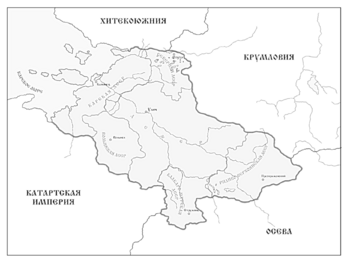Dulebian Federative Socialist Republic
Dulebian Federative Socialist Republic Дулебская Федеративная Социалистическая Республика Dulebskaya Federativnaya Sotsialisticheskaya Respublika | |||||||||||
|---|---|---|---|---|---|---|---|---|---|---|---|
| 17 September 1916 - 12 March 1920 | |||||||||||
 Territory of the Dulebian Federative Socialist Republic in 1919, after the Dulebian Civil War | |||||||||||
| Capital | Ulich | ||||||||||
| Common languages | Dulebian | ||||||||||
| Government | Federal Marxist–Leninist one-party socialist republic | ||||||||||
| Head of state | |||||||||||
• September 1916 - April 1919 | Viktor Shchyukin | ||||||||||
| Legislature | Supreme Workers Assembly | ||||||||||
| Historical era | Continental war | ||||||||||
| 1913-1918 | |||||||||||
• Republic proclaimed | 17 September 1916 | ||||||||||
| March 1920 | |||||||||||
| Currency | Dulebian mark | ||||||||||
| |||||||||||
The Dulebian Federative Socialist Republic (dul. Дулебская Федеративная Социалистическая Республика, tr. Dulebskaya Federativnaya Sotsialisticheskaya Respublika) was a short-lived state proclaimed in 1913 following the January Revolution in the Dulebian Empire and the dethronement of emperor Aleksandr III. It de jure controlled the territory of the former Dulebian Empire during its participation in the Continental war. Its borders were set in May 1914 following the Treaty of Ulich with Krumlau and the formal defeat in the continental war.
The state was a personal project of Viktor Shchyukin, who believed that the only way to keep the Dulebian state stable after the worker's revolution was to make it federative and give its ethnic minorities a decree of autonomy.

